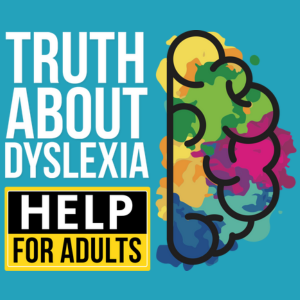
Breathwork and Sound Healing for ADHD and Dyslexia: A Calming Reset for the Mind
Share
When I first stepped into the world of energy healing, I was drawn to its calming, grounding power. But as I started to work with more and more clients, especially those with ADHD or dyslexia, I began noticing something remarkable—these practices were doing more than just helping people relax. They were offering real, tangible support in how people focused, processed information, and experienced their world.
If you or someone you love lives with ADHD or dyslexia, you’ll know that traditional methods of support, like medication or tutoring, are just part of the picture. Many people are now looking for holistic tools that can complement those approaches and bring a greater sense of ease, calm, and clarity to the nervous system. That’s where breathwork and sound healing come in.
Let’s take a deeper look at why these practices are particularly helpful for people with ADHD and dyslexia—and why I’ve intentionally created shorter, accessible options for those who may find 90-minute sessions overwhelming.
Why Breathwork Helps the ADHD Brain

ADHD is often described as a brain that’s “always on”—constantly jumping from one idea to the next, with a nervous system in overdrive. It’s not just about attention; it’s also about regulation. Breathwork, especially controlled and rhythmic breathing, gives the brain and body a chance to reset.
Scientifically, breathwork helps activate the parasympathetic nervous system—the “rest and digest” mode that helps calm the body down. For people with ADHD, who often live in the “fight or flight” state of the sympathetic nervous system, this is incredibly powerful. Just a few minutes of focused breathing can slow the heart rate, lower cortisol levels, and bring the brain into a more balanced state.
In fact, some studies have shown that slower breathing patterns (like 4-7-8 or alternate nostril breathing) can increase activity in the prefrontal cortex—the part of the brain responsible for focus, decision-making, and impulse control. This is exactly the part of the brain that often works differently in ADHD.
For my clients, I’ve seen breathwork help with:
-
- Focusing on tasks without distraction
- Falling asleep more easily
- Managing emotional overwhelm
- Managing emotional overwhelm
And here’s the best part: breathwork doesn’t require sitting still for long periods. Many of the techniques I use only take five to seven minutes. They’re short enough to hold attention—but powerful enough to create lasting shifts.
Sound Healing and Neurodiverse Minds
One thing I’ve learned from both personal experience and working with neurodiverse clients is this: shorter can be better.
While I love the depth that a 90-minute sound bath can bring, I also know that for someone with ADHD, that length can feel like an eternity. Restlessness kicks in, the mind starts wandering, and the opportunity for healing gets lost.
That’s why I offer shorter 45-minute sessions, especially on Sundays, designed to meet people where they are. These still offer the full richness of sound healing—with bowls, chimes, and deeply relaxing tones—but in a timeframe that feels more accessible and achievable. The same goes for breathwork: my sessions focus on brief, potent practices you can learn and use every day.
In a world that moves fast—and minds that move even faster—it’s important to meet healing with flexibility.
Creating a Space That Feels Safe and Supportive
Whether it’s ADHD, dyslexia, or simply a highly sensitive nervous system, the key to any healing experience is creating a space where people feel safe, seen, and unjudged. That’s something I’ve intentionally woven into every part of my practice—from the soft lighting and calming scents in my studio to the pace at which I guide sessions.
For those with dyslexia, I also make sure not everything is heavily verbal. Sound and breath are universal—no reading required, no pressure to keep up. Just presence.
And for people who feel overwhelmed by group settings, I offer private sessions too. Sometimes just knowing that you can go at your own pace makes all the difference.
The Feedback Speaks for Itself
I’ve had parents of neurodiverse children tell me that after a short sound bath, their child slept better than they had in weeks. I’ve seen adults who struggle with hyperactivity leave a breathwork session in tears—because it was the first time they’d felt calm all day.
This work isn’t magic—but it is medicine.
It’s medicine for the nervous system. Medicine for the mind. And for many people with ADHD or dyslexia, it’s a path back to balance that feels natural, empowering, and kind.
Final Thoughts: You Don’t Have to Sit Still to Heal
Healing doesn’t have to mean silence and stillness. It can look like deep breathing for five minutes on your lunch break. It can sound like the low hum of a crystal bowl washing over your body. It can feel like finally being able to slow down your thoughts and reconnect with yourself.
If you or someone you love has ADHD or dyslexia, know that there are gentle, effective tools out there that can support the journey. And you don’t have to do it alone.
You’re always welcome in my space, just as you are.
I operate Online Breathwork Classes too.
Kind Regards
Holly

Holly Neighbours Ltd
Breathwork and Sound Healing Facilitator
021-126-5304

